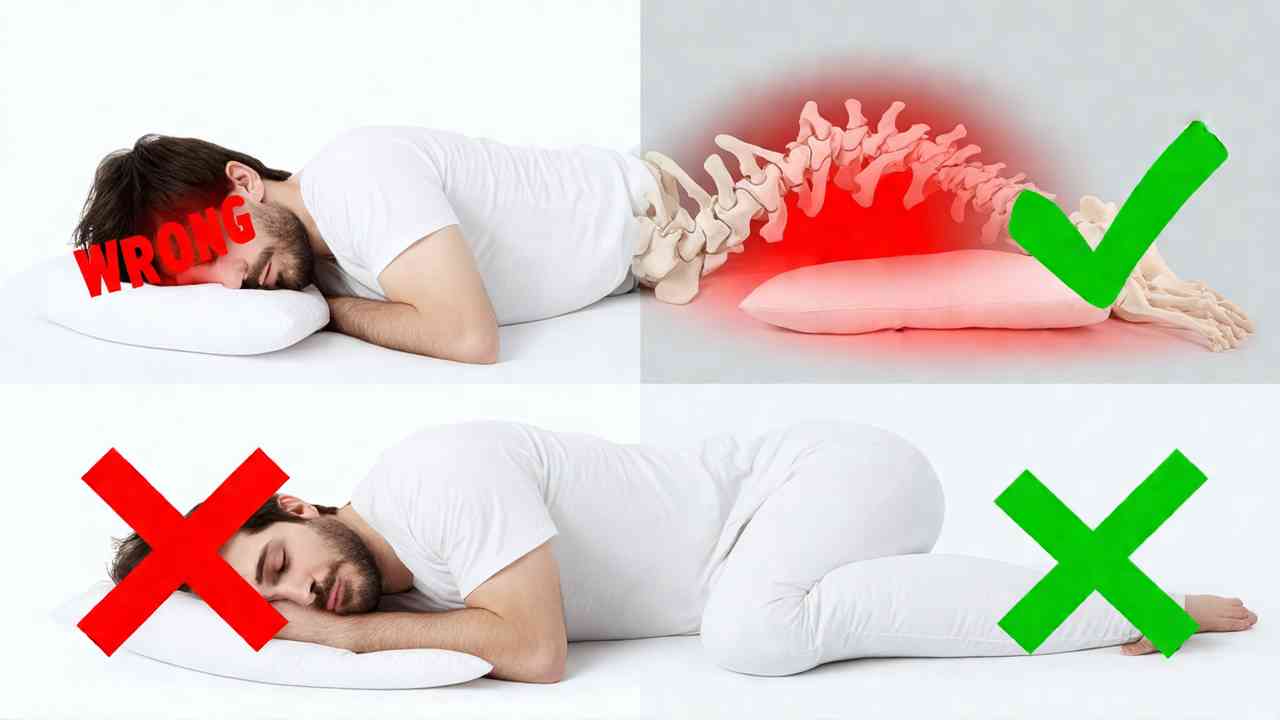
🛌 The Best Way to Sleep with Sciatica: A Doctor's Guide to Pain Relief
🛌 A Doctor's Guide on the Best Way to Sleep with Sciatica 🛌
❗ Important Medical Information: Sciatica is a symptom of an underlying medical issue, like a herniated disk. It requires a proper diagnosis from a medical professional. This guide provides general advice for improving sleep posture and is not a substitute for seeing a doctor or a physical therapist. If your pain is severe, sudden, or accompanied by weakness, seek medical attention immediately.
Sciatica—the shooting pain that radiates from your lower back down your leg—can make finding a comfortable sleeping position feel impossible. The pain can disrupt your sleep and leave you feeling exhausted and sore in the morning. The key to relief is to find a position that reduces the pressure on your sciatic nerve.
This guide will show you the most effective, doctor-approved strategies. We will focus on simple adjustments to your posture that can provide significant relief. As the weather gets cooler in the autumn, a good night's rest is more important than ever for healing. ✅
🤔 First, What Is a 'Neutral Spine'?
This is the most important concept to understand. A neutral spine is when your head, neck, and spine are all in a straight, natural line. The goal is to replicate your good standing posture while you are lying down. Any position that twists or unnaturally curves your lower back can compress the sciatic nerve and worsen your pain.
- What Are the Best Sleeping Positions for Sciatica Relief?
There are a few sleeping positions that are recommended for taking the pressure off your nerve root. Your choice will depend on what feels most comfortable for you.
1. Why is Side Sleeping with a Pillow Between Your Knees the #1 Fix? ⭐
If you are a side sleeper, it is best to sleep on your pain-free side. The most crucial step is to place a firm pillow between your bent knees.
This simple trick is a game-changer. It elevates your top leg, which prevents it from falling forward and twisting your pelvis and lower back. This keeps your hips, pelvis, and spine in a straight, neutral line. This is often the single most effective way to find relief.
2. How Can You Sleep on Your Back Safely? 👍
Sleeping on your back is another great option as it naturally distributes your weight evenly. To provide even more relief and the best way to sleep with sciatica in this position, place a pillow under your knees. This elevates your legs slightly, which helps to maintain the natural curve of your lower back and reduces pressure on the nerve root.
3. What is the Fetal Position?
Gently curling up into a fetal position can also be helpful. This position opens up the space between your vertebrae, which may help to decompress the pinched nerve root. Again, placing a pillow between your knees in this position is highly recommended.
🚫 What is the ABSOLUTE WORST Sleeping Position?
If you have sciatica, there is one position you must avoid at all costs: sleeping on your stomach. This position flattens the natural curve of your spine. It also forces you to turn your head to one side, which twists your neck and back. It is the worst possible position for spinal alignment and will almost certainly make your sciatica worse.
- What Other Tips Can Help?
Beyond your sleeping position, a few other habits can provide relief.
- Check Your Mattress: Your mattress should be medium-firm. A mattress that is too soft will allow your hips to sink, causing misalignment.
- Gentle Stretches: Perform some gentle, doctor-approved stretches before getting into bed to loosen up tight muscles in your glutes and lower back.
By making these simple but powerful adjustments, you can significantly reduce your nighttime pain and wake up feeling more rested and comfortable. 😴